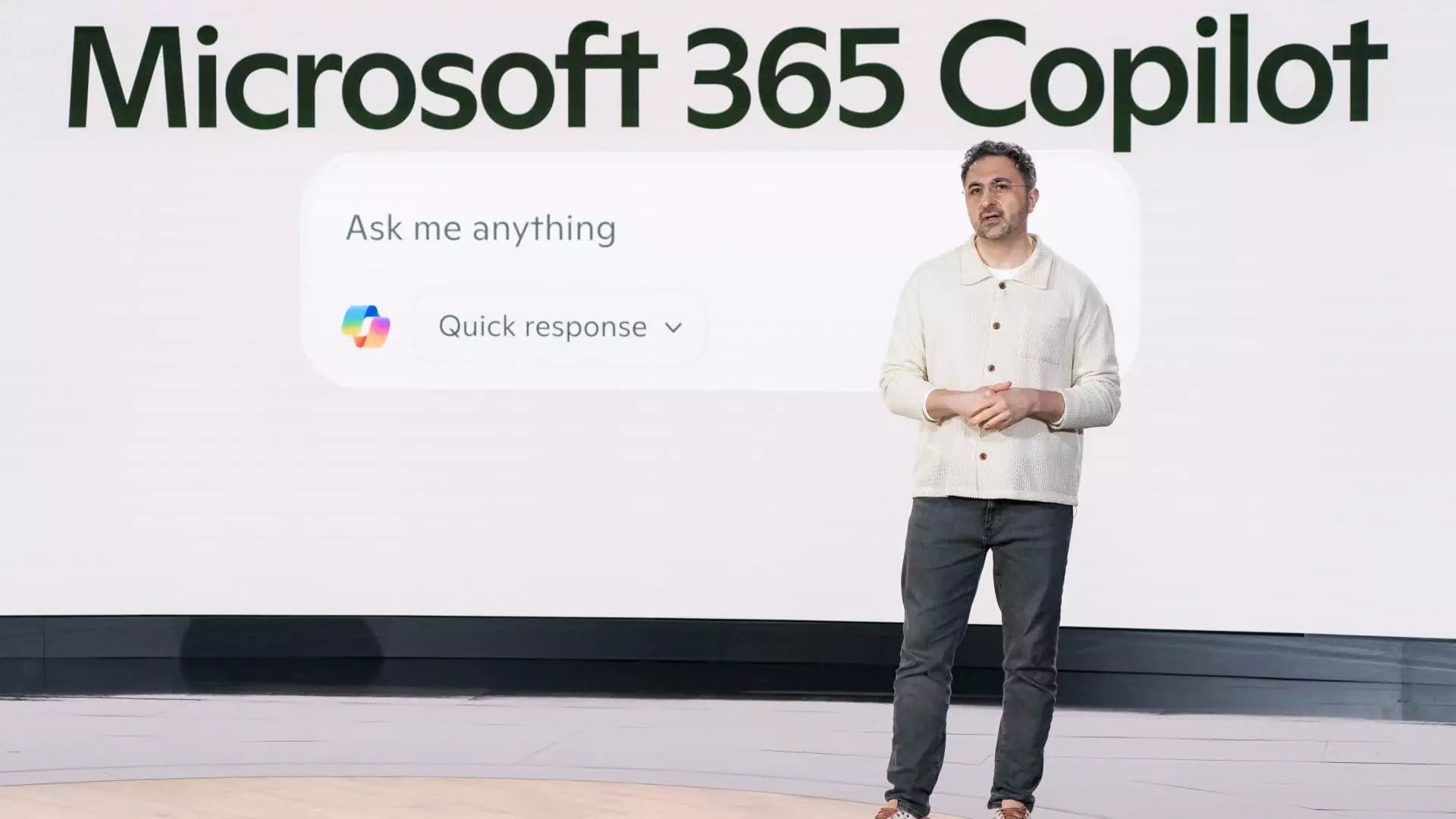In the increasingly competitive landscape of artificial intelligence (AI), Microsoft’s decision to strategically lag behind cutting-edge advancements raises eyebrows. CEO of AI, Mustafa Suleyman, suggests a counterintuitive approach to AI development: rather than being the first to market with groundbreaking models, Microsoft aims to refine existing technologies within a more measured timeline. This mindset not only reflects a shrewd business strategy rooted in realism but also a deeper understanding of the costs associated with the high-stakes race for AI supremacy.
Suleyman emphasizes that opting for an “off-frontier” strategy—waiting three to six months to observe the outcomes of the initial frontiers—can yield significant benefits. This method allows the corporation to learn from the early adopters’ missteps while concentrating on specific, practical uses of AI rather than chasing every shimmering advancement that might not translate into anything useful or economically viable. It subtly hints at the flaws of an industry that often equates speed with success, suggesting a far more prudent pacing in a sphere notorious for its unpredictability and hype.
The Value of Collaboration
The interconnected relationships Microsoft has fostered with companies like OpenAI and CoreWeave underscores a crucial pivot in AI development philosophy: collaboration over competition. With an investment portfolio touting a staggering $13.75 billion in OpenAI, Microsoft not only underscores its commitment to partnership but also to sharing cognitive resources in the form of models and computing power.
For Microsoft, this is not just a matter of using someone else’s technology but rather an admission that in the vast arena of AI, no single entity can or should strive to be an island. Leveraging existing innovations to build tailor-made applications allows Microsoft to secure a competitive edge without the astronomical costs typically associated with leading-edge model development. Suleyman’s assertion of Microsoft’s future reliance on efficient and effective partnerships illuminates a pathway forward for AI that prioritizes pragmatism and market readiness over mere technological supremacy.
Consumer-Centric Innovation
Suleyman’s vision for AI extends beyond the realm of technocracy; it is also deeply rooted in user experience. The forthcoming “memory” feature in Copilot that will enable it to remember details about individual users exemplifies an evolution towards user-centric design. Rather than just offering sporadic updates, Microsoft is poised to develop a more intuitive and personalized interface that anticipates user needs, creating a more engaging experience.
This approach resonates particularly with businesses operating in a consumer-driven environment. In an age where data breaches and privacy concerns have consumers wary of technology, Microsoft’s push towards responsible and responsive AI development could serve to differentiate it from rivals. Such innovations signal a shift away from the perception of AI as a faceless algorithm working mechanically towards an end, instead humanizing technology that people can relate to and trust.
Balancing Short-Term Gains with Long-Term Visions
However, this wait-and-see strategy is not without its risks. The AI landscape is evolving at lightning speed, and while a cautious stance protects from immediate pitfalls, it also opens the door for competitors to seize the initiative. Microsoft’s gradual approach may yield substantial advantages in the long run, but it risks losing ground to companies willing to embrace failure as part of their R&D culture.
Moreover, the budding tension between Microsoft and OpenAI hints at an uncertainty that megatech companies face as they vie for dominance in this volatile sector. The duality of collaboration and competition—where partners also become rivals—could complicate Microsoft’s pathway toward autonomous AI development. As Suleyman candidly stated, self-sufficiency in AI is not merely a goal; it’s an existential necessity for Microsoft. The stakes are high—failure to maintain its relevance could erode Microsoft’s competitive advantage in the long term.
In essence, Microsoft is charting a thoughtful course through uncharted waters—a blend of patience, partnership, and user engagement. As the race toward AI maturity gears up, it remains to be seen if this approach will fortify Microsoft’s foothold or leave it vulnerable in an industry that shows no signs of slowing down.

Leave a Reply